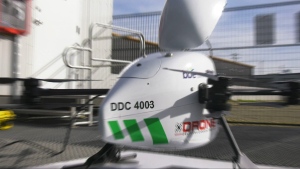Drones and planes have long shared the sky, but a new phase of development is bringing them even closer together. This advancement holds great promise for the future of aviation.
Traditionally, drones and planes have operated in separate airspaces, with drones typically flying at lower altitudes. However, with the increasing use of drones for commercial and recreational purposes, there is a growing need for them to share the same airspace as planes.
To address this challenge, the Federal Aviation Administration (FAA) has been working on a new system called the Unmanned Aircraft System Traffic Management (UTM). This system will allow for the safe integration of drones into the national airspace system, alongside traditional manned aircraft.
The UTM system utilizes a combination of technologies, including satellite navigation, radar, and communication systems, to track and monitor the movement of drones in real-time. This will enable air traffic controllers to have a complete picture of all aircraft in the sky, including drones, and make informed decisions to ensure safe and efficient operations.
One of the key benefits of this new system is the potential for increased efficiency in the airspace. With the ability to track and manage drones, air traffic controllers can optimize flight paths and reduce congestion, leading to shorter travel times for both drones and planes.
Moreover, the UTM system will also enhance safety by providing real-time alerts and notifications to pilots and air traffic controllers in the event of any potential conflicts between drones and planes. This will help prevent accidents and ensure the safety of all aircraft in the sky.
The development of the UTM system is a collaborative effort between government agencies, industry partners, and academia. The FAA has been working closely with companies such as Amazon and Google, who are heavily invested in the use of drones for delivery services, to develop and test the system.
While the UTM system is still in its early stages of development, it has already shown great potential for the future of aviation. With the increasing use of drones in various industries, the need for a safe and efficient way to integrate them into the airspace is crucial. The UTM system is a significant step towards achieving this goal and will pave the way for the widespread use of drones in the future.




